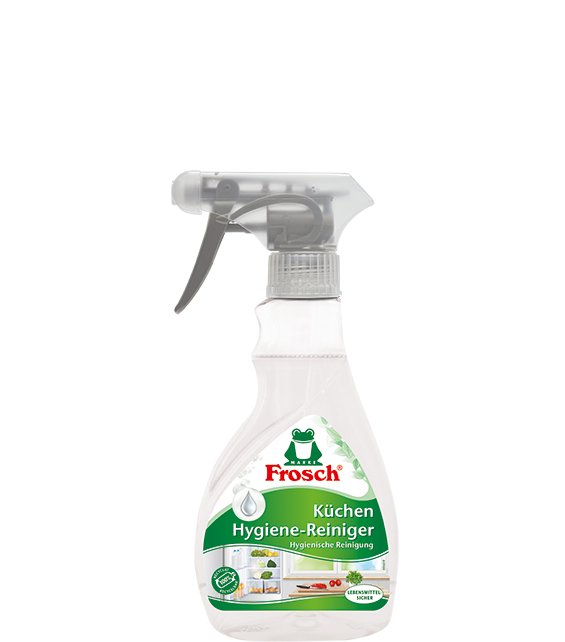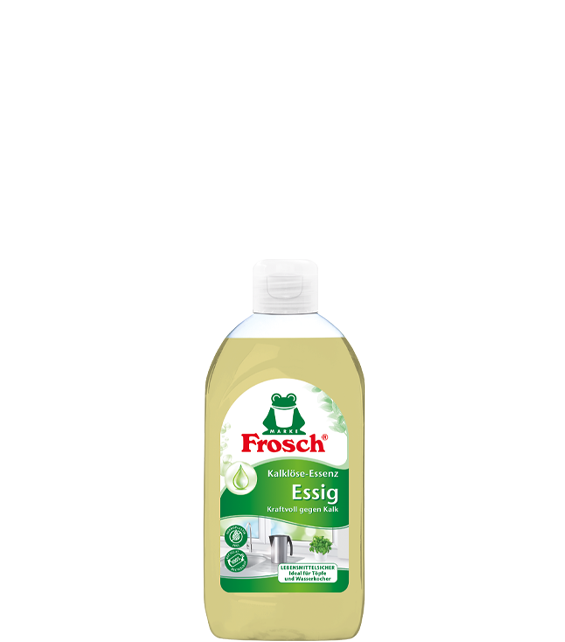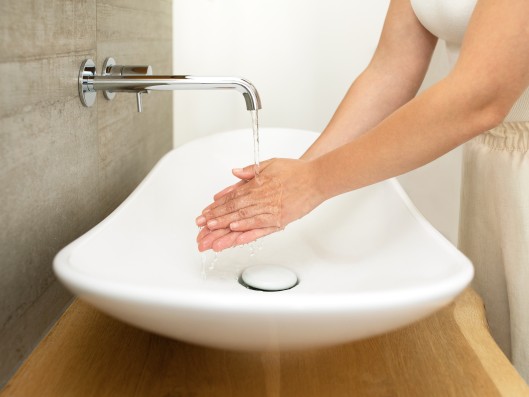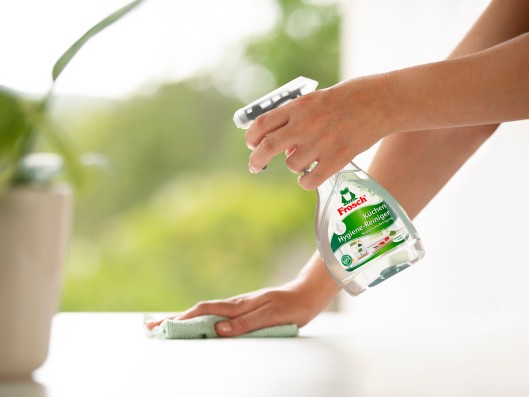
Environmentally friendly hygiene tips for a clean kitchen
Keep the sink clean
The kitchen sink is used for many different things. You use it to clean pots and pans and other kitchen utensils, your hands, as well as fruit and vegetables. This can quickly turn the sink into a hotbed for germs. You should therefore rinse the sink well after each use and give it a thorough and regular clean.
Hygienic kitchen textiles
Do you wipe down your worktops, chopping boards and knives all in one go? You shouldn't. Because germs accumulate on the kitchen sponge, which are then spread around the kitchen. You are better off using different cloths for different areas and objects. You can use different coloured ones to help you stick to a routine. Wash your dish towels and other cleaning textiles at 60°C and replace sponges regularly.
How do I store food correctly and clean the fridge properly?
Your fridge is in constant use, which means you should clean it regularly. Clean all the inside surfaces of your fridge with a damp cloth about every 2 weeks. You can use the Kitchen Hygiene-Cleaner from Frosch for this, because it is food-safe, gentle on materials as well as environmentally friendly.
Organising your fridge
- The top shelf, at 8–10 °C, is best for long-life and prepared foods. You can also store cheese here.
- The temperature on the middle shelf is approx. 5 °C. Here you should store dairy products such as yoghurt, cream and quark.
- The shelf above the vegetable compartment, at 2-3 °C, is ideal for perishable foods such as (minced) meat, sausage and fish.
- The door compartments are among the warmest places in the fridge. Here you should store butter, drinks, sauces and eggs.
- Most fridges have an extra compartment for fruit and vegetables. Find out what fruits and vegetables can be stored in the fridge and keep them there until you eat them.
- Raw meat calls for extra caution. If you buy it at the butcher's, it's often wrapped in paper and put in a bag. There is a high risk of something dripping from the bag into other areas of the fridge, which means germs can escape. It's therefore a good idea to put the meat in a box or bowl until you prepare it.
How do I properly clean and care for my kitchen appliances?
The dishwasher
Remove any excess food waste from dishes and cutlery before putting them in the dishwasher. The dishwasher strainer catches small bits of food, which is why it should be emptied and cleaned regularly. You don't need to rinse your dishes first, because the dishwasher can easily cope with normal dirty dishes.
The oven
Pizzas, rolls and casseroles cause grease and grime to build up in the oven. So that you don't have to spend ages cleaning your oven with an oven spray containing harmful chemicals every few months, regularly use the Kitchen Cleaner Grapefruit from Frosch for the inside of your oven as well as for trays and racks instead. It cleans your oven gently and in a natural and food-safe way.
Kettles and taps
Wo Wasser im Spiel ist, bildet sich schnell Kalk. Um deine Geräte und Armaturen davor zu schützen und Kalk zu entfernen, kannst du auf die Essig Kalklöse-Essenz von Frosch zurückgreifen. Seine Rezeptur mit Fruchtessig eignet sich ideal zur Kalkentfernung und Reinigung von Töpfen, Wasserkochern, Armaturen und Duschköpfen.




